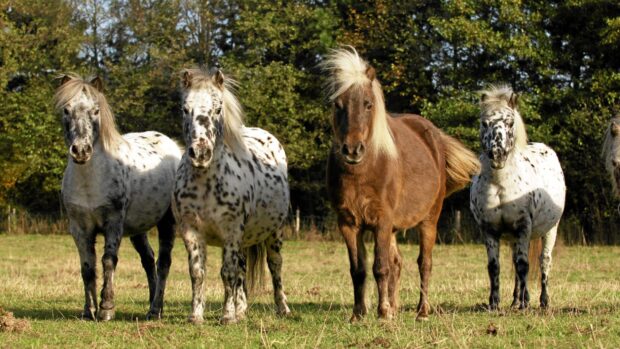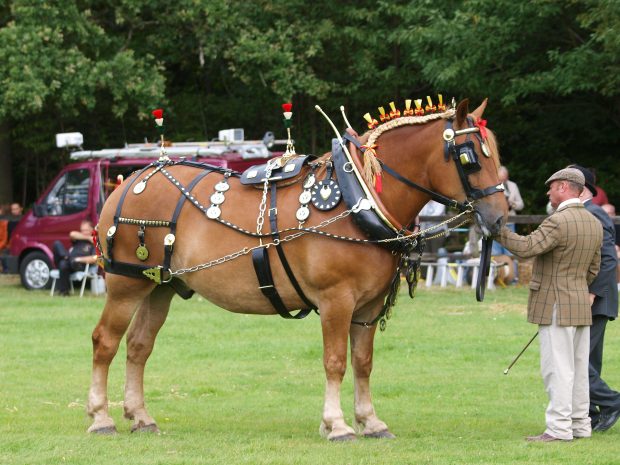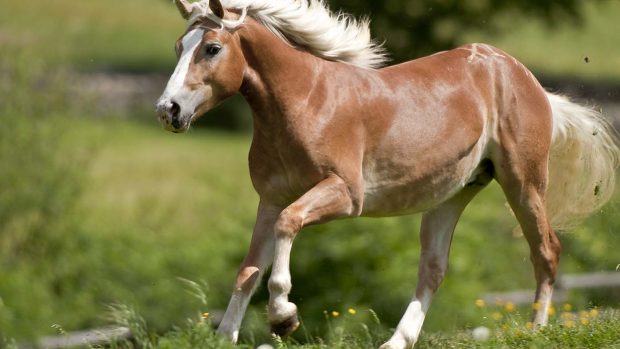Strong, noble and elegant, the modern Andalusian horse harks back to its ancestry as a war horse on the Iberian peninsula. For centuries, Spanish horses were famed for their agility, courage and intelligence, depicted in portraits throughout history as battle chargers for famous warriors.
In this article: What is an Andalusian horse? | PRE breed standard | Temperament | Movement | History | Famous horses
What is an Andalusian horse?
The title Andalusian loosely covers all breeds described as “Spanish horses”. They are sometimes under the umbrella of Iberian horses, which includes Portuguese breeds as well. As they have common descent, and were inter-bred at times in their history, it can be very hard to tell from the appearance whether an Iberian horse is Spanish or Portuguese. As a general overview, their main characteristics are similar but there are differences, particularly as regards pedigree regulations between each of the breeds.
A pure-bred Andalusian is called a PRE (Pura Raza Espagnola of Pure Spanish Horse). A PRE must have a pedigree record confirming both sire and dam have identification documents which prove they are licensed and registered in the studbook of the Association of Breeders of Purebred Spanish Horses (ANCCE). Licensed PREs have a coloured ribbon next to their name denoting their quality as breeding animals.
The Portuguese equivalent to the PRE is the PSL – a pure-bred Lusitano. Like the PRE, a Lusitano can only be a PSL if both parents are registered.
A Cruzado is a cross with both Portuguese and Spanish breeding, be it PRE, PSL, Andalusian or Lusitano. As both the PSL and PRE require both parents to be registered with their own studbooks, these cannot be registered with either.
PRE: overview (according to the breed standard)

- Medium-sized and short-backed with a high-set arched neck, and a rounded topline
- There is a desired body proportionality index (height at withers divided by length from shoulder to point of buttocks between 90–110) to provide an appearance of general harmony and beauty
- The horse’s weight is balanced towards the hindquarters, which enables them to show a high degree of collection and can give powerful jumping ability too.
- They have a robust and well-proportioned trunk, while the back should be muscular and almost straight, with short, broad and muscular loins
- The mane is typically abundant and silky; the tail low-set and with abundant, often wavy hair
- Their coats are characteristically short and fine, with minimal hair on the fetlocks
- To be registered with the ANCCE, PRE stallions must be 1.54m–1.72m and mares 1.52m–1.70m
- Greys and bays are dominant, but other solid colours are permitted. Greys, bays and blacks have at various times in history been popular with the Royal Stud, and now around 70% of PREs in Spain are grey. Chestnuts were only accepted into the studbook in 2002
- White patches, and excessive white on the head or legs is not considered an acceptable trait. They are also not permitted to have eyes of different colours
- Mares and stallions should show sexual dimorphism, with the mares being smaller and slighter than their male counterparts
Temperament of the Andalusian horse
They are typically kind, sensitive, intelligent and quick learners, who will give their all. While they are energetic, they are also naturally docile and robust. As a working animal throughout history, they have been bred to cooperate with humans. Naturally, some are hotter and more sensitive than others, and these tend to be favoured in performance sport where extra dynamism and energy is required.
Andalusian horse: movement
Andalusians are famed for their ability to sit and collect, which makes them popular as dressage horses. Their paces are typically cadenced and elastic with significant elevation and extension. They find it easy to collect and turn on their haunches. Besides dressage, they are used as general riding horses, farm work and in the bullfighting arena; they are also often used in movie-making thanks to their trainability, obedience and noble looks.
All paces are straight and regular. The walk should be ground covering, while the trot is suspended and elegant, with active use of the hindquarters and joint flexion to push forward. The canter is fluid and elastic with impulsion. Horses with poor movement, such as irregular paces, poor elevation, dishing and ambling, are penalised accordingly in the assessment process for the studbook.
Potted history
Originally a cavalry horse, Iberian horses became popular with royalty and the nobility and consequently gained a reputation as the “the Royal Horse of Europe”. King Felipe of Spain formalised PRE breeding in 1567 according to strict breeding standards, with the studbook being formed in 1911.
Although they have proved extremely popular at certain times in history, they have faced extinction, particularly during wartime due to theft – Spain having spent much of the 19th and 20th centuries fighting various wars. The low numbers resulted in an embargo on their exportation, which was lifted in 1963. The first Spanish horses for 200 years arrived in England in the late 1960s and the British Andalusian Horse Society was formed in 1982, which is now called the British Association for the Pure-Bred Spanish Horse.
The Andalusian has been influential on many other horse breeds over the centuries, such as the Lipizzaner, Friesian and Hanoverian. Some Andalusian experts believe they also contributed to thoroughbred, Trakehner and Cleveland Bay lines among others.
Famous Andalusians
Fuego XII – wowed the crowd with his flamenco freestyle in the World Equestrian Games in 2010, ridden by Juan Manuel Muñoz Diaz.

Babieca – the white stallion warhorse of El Cid Campeador. A legendary Andalusian horse from 11th century in medieval Spain.
Evento – was credited as one of the key PRE horses to kick off international dressage in Spain, ridden by Ignacio Rambla. He competed at four European Championships, the World Equestrian Games in 1998 and finished 11th at the Atlanta Olympics.
- For more information visit the British Association of the Purebred Spanish Horse website: bapsh.co.uk
You may also like to read…

The original Black Beauty? All you need to know about the magnificent Friesian horse

8 stunning Iberian horses who won medals at the MCI European Finals
Check out just some of fabulous medal winners from across the levels at the MCI European finals

Why Iberian horses are booming in Britain more than ever *H&H Plus*

Subscribe to Horse & Hound magazine today – and enjoy unlimited website access all year round
Horse & Hound magazine, out every Thursday, is packed with all the latest news and reports, as well as interviews, specials, nostalgia, vet and training advice. Find how you can enjoy the magazine delivered to your door every week, plus options to upgrade your subscription to access our online service that brings you breaking news and reports as well as other benefits.





